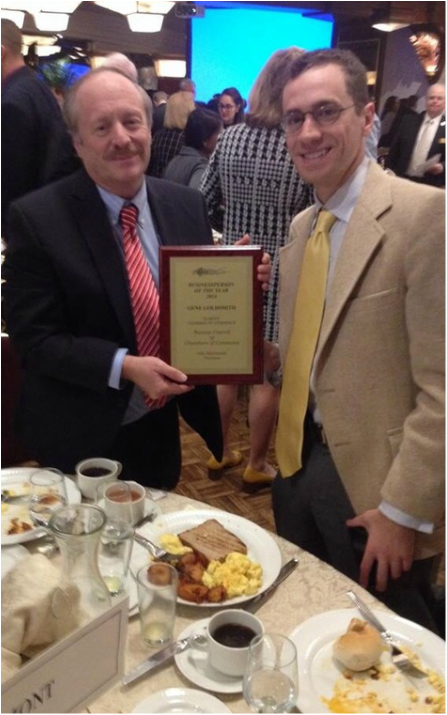Michael Hirinchs: Honoring Crime Buster
By Abi Giwa

On Friday January 9, 2015, colleagues, family and friends came together in honor of Detective 1st Grade Michael Hinrichs, the most decorated police officer in New York's history, in the Belle Harbor Yacht Club, Queens, New York. But for inexplicable reason, the city's Mayor Bill de Blasio and the police Commissioner William Bratton were missing at the roll call.
A young woman of color at the party spoke of her mother’s murder, when she was 12 years old and her sister at 11, and how for twenty years the crime went unsolved and no one was arrested. She said a mutual friend introduced her to Hinrichs twenty years after her mother’s murder; and that Hinrichs took the case and ran with it, and eventually located and arrested her mother’s murderer in Pennsylvania.
She spoke further about how no one seemed to care of the crime that tore her family and life apart; how it haunted her and she thought it would never be solved and that no one would be held accountable before she met Hinrichs. She said If only every person, every police officer could have that positive effect on another person, what a world it would be.
A young woman of color at the party spoke of her mother’s murder, when she was 12 years old and her sister at 11, and how for twenty years the crime went unsolved and no one was arrested. She said a mutual friend introduced her to Hinrichs twenty years after her mother’s murder; and that Hinrichs took the case and ran with it, and eventually located and arrested her mother’s murderer in Pennsylvania.
She spoke further about how no one seemed to care of the crime that tore her family and life apart; how it haunted her and she thought it would never be solved and that no one would be held accountable before she met Hinrichs. She said If only every person, every police officer could have that positive effect on another person, what a world it would be.
Michaelle Solages and the face of Mona Lisa
By Abi Giwa
 Solages
Solages
She looks quiet and serene outwardly. But behind her seeming quietness and serenity are resolves that speak directly to a reporter that she has the steeliness of a politician. She may not have the look and outward actions of a Margaret Thatcher, but with her smile, she captures the specifics and robustness of Mona Lisa.
Please meet Michaelle Solages (D-Elmont) sworn in for a second term in office as Assemblywoman in New York State, representing the 22nd District in Nassau County of Long Island, and the first woman of Haitian background in the United States to achieve the feat.
Please meet Michaelle Solages (D-Elmont) sworn in for a second term in office as Assemblywoman in New York State, representing the 22nd District in Nassau County of Long Island, and the first woman of Haitian background in the United States to achieve the feat.
Gene GoldSmith: Lessons from Timely service philosophy
By Abi Giwa

You had expected to see Gene Goldsmith as a chief executive officer of his company, in suit. But he was in a pair of black jeans pant and blue jeans shirt. He says he hardly wears suit to work, because his business requires work and not dressing to impress. He says it is how he appears to work at Timely Signs located on Linden Blvd., Elmont area of Long Island, New York.
Recently, he was awarded business man of the year by the Chambers of Commerce, for supporting schools and local businesses, a recognition for his business philosophy and community sense of belonging. He laments what he describes as business downturn in the last four years, which he says has affected being nice to workers, whose raises he said have not been as they should.
Concerning how he cares for his workers, he says, "Always looking at the bigger picture. The more value you provide with whoever you are working, the more you are likely to keep your position, and expand on the position."
Recently, he was awarded business man of the year by the Chambers of Commerce, for supporting schools and local businesses, a recognition for his business philosophy and community sense of belonging. He laments what he describes as business downturn in the last four years, which he says has affected being nice to workers, whose raises he said have not been as they should.
Concerning how he cares for his workers, he says, "Always looking at the bigger picture. The more value you provide with whoever you are working, the more you are likely to keep your position, and expand on the position."
Bill Edwards: Triumph and Adversity on the Pitch
May 2014 By Abi Giwa

Coach Bill Edwards of Hofstra University in Hempstead considers losing in games as a form of adversity and he does not like it. To avoid it, he works hard teaching his softball players fundamentals of the game; pushing them when necessary, letting them know how much he loves them and making them understand the ethics of hard work to win their games.
Resultantly, Edwards has consistently develop winning teams. He has lost count of the number of games he has won, but he remembers the record breaking laurel for his 900th win.
TESTIMONY
"Coach Edwards teaches and emphasizes the fundamentals of the game as thoroughly as anyone in the game. There is no question he has earned his Hall of Fame status by turning good players into great ones over their four years in a Hofstra uniform," assistant coach Kate Stake said about Edwards. "A lot of players go into programs and get better only to the degree that they get stronger and get more repetitions, but players under Coach Edwards' tutelage reach their full potential because they become such smarter players learning from him, as well."
Resultantly, Edwards has consistently develop winning teams. He has lost count of the number of games he has won, but he remembers the record breaking laurel for his 900th win.
TESTIMONY
"Coach Edwards teaches and emphasizes the fundamentals of the game as thoroughly as anyone in the game. There is no question he has earned his Hall of Fame status by turning good players into great ones over their four years in a Hofstra uniform," assistant coach Kate Stake said about Edwards. "A lot of players go into programs and get better only to the degree that they get stronger and get more repetitions, but players under Coach Edwards' tutelage reach their full potential because they become such smarter players learning from him, as well."
Tackling, Unemployment, Crimes, and Giving Convicts Second Chance
16 May 2014. By Abi Giwa
 Wayne Hall
Wayne Hall
Crime in Hempstead in 2011:
I mean there was during the session things somehow spiked up. People don't have jobs and they started commit crimes. And so during the 2010 and so forth, we stepped up with the police. Some of the crimes, not all the crimes dropped. I cannot tell you at the top of my head what they were, but when you average all the crime; burglary, grand larceny, homicide and them together into one thing, you compare it to 2009, 2010, 2011. Some of the crime have dropped. I can probably get you a chart if you want.
Terrace Avenue:
No, what happened was that they don't just happen in one area for long time. It just jumps all over the village. But Terrace Avenue happened to be the area that was open drug market. You can ride down there and see people shooting up, selling drugs, kids were afraid to go to school. You know without getting shy, I asked the DA to help me clean up that area. In the past, the past administration, what they will do, was that before the next election, have a raid on Terrace Avenue, clean up the drug deals, dealers and think they were doing an excellent job. As soon as the election was over, a couple of weeks after the same drug dealers will be out again doing same activities. But this time we went and took over to bust people and those who did not have a felony record were given a second chance. So that program cleaned up Terrace Avenue. Is it perfect? I don't know think so. But is it better better than it was? Yes, much better than it was.ck here to edit. (Read More)
I mean there was during the session things somehow spiked up. People don't have jobs and they started commit crimes. And so during the 2010 and so forth, we stepped up with the police. Some of the crimes, not all the crimes dropped. I cannot tell you at the top of my head what they were, but when you average all the crime; burglary, grand larceny, homicide and them together into one thing, you compare it to 2009, 2010, 2011. Some of the crime have dropped. I can probably get you a chart if you want.
Terrace Avenue:
No, what happened was that they don't just happen in one area for long time. It just jumps all over the village. But Terrace Avenue happened to be the area that was open drug market. You can ride down there and see people shooting up, selling drugs, kids were afraid to go to school. You know without getting shy, I asked the DA to help me clean up that area. In the past, the past administration, what they will do, was that before the next election, have a raid on Terrace Avenue, clean up the drug deals, dealers and think they were doing an excellent job. As soon as the election was over, a couple of weeks after the same drug dealers will be out again doing same activities. But this time we went and took over to bust people and those who did not have a felony record were given a second chance. So that program cleaned up Terrace Avenue. Is it perfect? I don't know think so. But is it better better than it was? Yes, much better than it was.ck here to edit. (Read More)
Estuary Reserve as an Ecosystem
Published: 14 May 2013 By Abiodun Giwa

Robert Weltner, president of Operation Splash spoke to Abiodun Giwa about the usefulness of an estuary to the human human community, the health of an estuary and what constitutes danger to it, using the South Shore Estuary in Long Island as an example.
Q: What is an estuary reserve?
A: I call it a nautical nursery. (Nautical means Sea, or belonging to the sea). It is where all the sea creatures that live in the sea come for safety away from the danger in the ocean, mate and reproduce.
Q: What is the importance of an estuary reserve to the human community?
A: An estuary reserve is a part of human community’s economy. People make a living out of it. They feed their families from it. People sell different types of fish and no one can claim not to love eating fish and other sea food. It is why the Sea needs to be kept healthy.
Q: How wide is the estuary in Long Island?
A: The South Shore Estuary in Long Island is 62 miles wide. It stretches from New York City to the Hamptons. (He brings out a map of the South Shore estuary). The South Shore estuary is a swamp between the human community and the ocean. It is the only estuary in Nassau and Suffolk counties in Long Island.
Q: What are the characteristics of an estuary?
A: An estuary naturally lies between the human community and the ocean. It is inhabited by sea creatures who avoid the ocean to be safe. The estuary has inlets for water from the ocean to dilute with the water in the estuary. When the water from the ocean dilutes with the water in the estuary, it cleans up the water in the estuary. There are about five inlets in the South Shore Estuary. The inlets are at Shinnicock, Moniches, Jones, Rockaway and Fire Island. The inlets ensure water in the estuary is not stagnant.
Q: What would you say constitutes unhealthiness to an estuary?
A: Historically, at a time when things were productive and healthy before the settlers set their feet on this shore, all shell fishes, oysters and clams, were here in large numbers. There were plenty of fishes to catch for food. But pollution and commercialization have changed everything. When we set out to build these houses and roads diminishing the shorelines, they cause closure of inlets and leads to limited ocean water to the estuary. There is a fish called ‘Fluke’. All the flukes come to the estuary to mate and reproduce, but the commercial fishermen don’t allow them to settle down before they are caught. This diminishes the population of fishes in the water.
Q: Do you have any reason why people like to live close to the sea?
A: People like to live close to the Sea because they wish to be close to Nature, which the natural trend of the ecology of the estuary affords them. In the bid to enjoy the nature and develop access to it, humans have infringed on the right of sea creatures. It is what civilization has caused us. It is part of what is causing global warming and its repercussions. Currently, people who live close to the sea know the effect of the repercussions of this infringement on Nature in the name of modernism. But those who live far away from it would not easily understand what happened during Hurricane Sandy. What we are witnessing is an attempt by Nature to reclaim what belongs to it that civilization has deprived it.
Q: Apart from human infringement on nature that constitutes threat to the lives of sea creatures, what would you say determines suitable water for these creatures?
A: Water that is not high in salt. The water must be brackish for the safety of the sea creatures for them to be able to spurn. They cannot spurn in high sea water. They need less salt to spurn. The water in the estuary has less salt because of the fresh water diluting with it from the land when rain falls and through snow melting.
Q: What bad effect does debris on the wetlands have on the water and the habitats?
A: To ensure there is no debris on the wetlands across the South Shore is why I am here with the Splash cleaning up the wetlands in Long Island the debris do not danger to marine lives. They endanger the lives of sea creatures and the birds that fly in the air. Just like the fish that come to the estuary to spurn, different types of birds come to the wetlands to reproduce. Birds like to go to certain areas like the estuary for reproduction purposes and if they eat garbage containing dangerous materials, their lives will be endangered with high mortality and reduces their population.
Q: How does the debris get into the water?
A: Water from the rain goes into the storm drains with garbage. All the drains you see on the streets across the city lead into the bay. When the wind blows, the tide carries the garbage in the water into the marches on the wetland and the garbage can also be forced back into the water by the wind.
.
Q: What is an estuary reserve?
A: I call it a nautical nursery. (Nautical means Sea, or belonging to the sea). It is where all the sea creatures that live in the sea come for safety away from the danger in the ocean, mate and reproduce.
Q: What is the importance of an estuary reserve to the human community?
A: An estuary reserve is a part of human community’s economy. People make a living out of it. They feed their families from it. People sell different types of fish and no one can claim not to love eating fish and other sea food. It is why the Sea needs to be kept healthy.
Q: How wide is the estuary in Long Island?
A: The South Shore Estuary in Long Island is 62 miles wide. It stretches from New York City to the Hamptons. (He brings out a map of the South Shore estuary). The South Shore estuary is a swamp between the human community and the ocean. It is the only estuary in Nassau and Suffolk counties in Long Island.
Q: What are the characteristics of an estuary?
A: An estuary naturally lies between the human community and the ocean. It is inhabited by sea creatures who avoid the ocean to be safe. The estuary has inlets for water from the ocean to dilute with the water in the estuary. When the water from the ocean dilutes with the water in the estuary, it cleans up the water in the estuary. There are about five inlets in the South Shore Estuary. The inlets are at Shinnicock, Moniches, Jones, Rockaway and Fire Island. The inlets ensure water in the estuary is not stagnant.
Q: What would you say constitutes unhealthiness to an estuary?
A: Historically, at a time when things were productive and healthy before the settlers set their feet on this shore, all shell fishes, oysters and clams, were here in large numbers. There were plenty of fishes to catch for food. But pollution and commercialization have changed everything. When we set out to build these houses and roads diminishing the shorelines, they cause closure of inlets and leads to limited ocean water to the estuary. There is a fish called ‘Fluke’. All the flukes come to the estuary to mate and reproduce, but the commercial fishermen don’t allow them to settle down before they are caught. This diminishes the population of fishes in the water.
Q: Do you have any reason why people like to live close to the sea?
A: People like to live close to the Sea because they wish to be close to Nature, which the natural trend of the ecology of the estuary affords them. In the bid to enjoy the nature and develop access to it, humans have infringed on the right of sea creatures. It is what civilization has caused us. It is part of what is causing global warming and its repercussions. Currently, people who live close to the sea know the effect of the repercussions of this infringement on Nature in the name of modernism. But those who live far away from it would not easily understand what happened during Hurricane Sandy. What we are witnessing is an attempt by Nature to reclaim what belongs to it that civilization has deprived it.
Q: Apart from human infringement on nature that constitutes threat to the lives of sea creatures, what would you say determines suitable water for these creatures?
A: Water that is not high in salt. The water must be brackish for the safety of the sea creatures for them to be able to spurn. They cannot spurn in high sea water. They need less salt to spurn. The water in the estuary has less salt because of the fresh water diluting with it from the land when rain falls and through snow melting.
Q: What bad effect does debris on the wetlands have on the water and the habitats?
A: To ensure there is no debris on the wetlands across the South Shore is why I am here with the Splash cleaning up the wetlands in Long Island the debris do not danger to marine lives. They endanger the lives of sea creatures and the birds that fly in the air. Just like the fish that come to the estuary to spurn, different types of birds come to the wetlands to reproduce. Birds like to go to certain areas like the estuary for reproduction purposes and if they eat garbage containing dangerous materials, their lives will be endangered with high mortality and reduces their population.
Q: How does the debris get into the water?
A: Water from the rain goes into the storm drains with garbage. All the drains you see on the streets across the city lead into the bay. When the wind blows, the tide carries the garbage in the water into the marches on the wetland and the garbage can also be forced back into the water by the wind.
.

